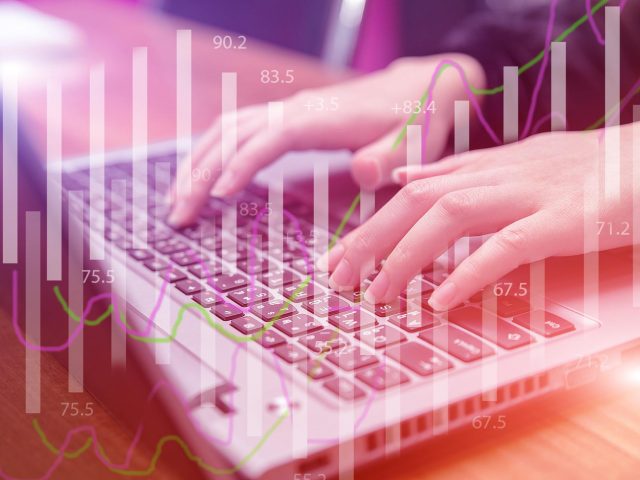The evolution of artificial intelligence has changed the landscape of modern writing and content creation. From marketing blogs to research papers, AI-generated text has become increasingly common. This convenience, however, has sparked new challenges around originality and authenticity. To address these concerns, the AI detector has emerged as an essential tool in today’s digital ecosystem.
An AI detector is designed to identify whether a piece of text has been written by a human or produced by artificial intelligence. Using machine learning and linguistic analysis, these tools recognize subtle patterns that distinguish human creativity from algorithmic precision. Their role extends beyond curiosity—they protect academic integrity, ensure professional transparency, and preserve trust in written communication.

How AI Detectors Operate
AI detectors analyze writing by examining elements such as sentence flow, vocabulary diversity, and syntactic rhythm. Human authors typically produce varied structures, emotional cues, and imperfect phrasing, while AI systems often generate smoother, more uniform text. By identifying these contrasts, a detector estimates how likely it is that content was produced by a machine.
Most AI detectors rely on natural language processing (NLP) techniques to break text into smaller components. These elements are compared to large datasets containing examples of both human and AI writing. The software then generates a probability score or percentage that indicates the text’s likely origin.
Educational Importance of AI Detectors
In schools and universities, AI writing tools have redefined how students complete assignments. Essays that once took hours can now be generated in minutes, creating challenges for educators who value authentic expression. An AI detector enables teachers to identify AI-assisted submissions, reinforcing fairness and maintaining academic standards.
These tools also encourage honesty. When students are aware that their work may be checked by detection systems, they’re more likely to balance AI use with their own critical thinking and creativity. This approach not only promotes integrity but also strengthens essential writing skills.
The Role of AI Detectors in Media and Publishing
The publishing and journalism industries depend heavily on credibility and human insight. Readers expect content that reflects genuine perspectives rather than machine-generated summaries. By integrating AI detectors into editorial processes, publishers and editors can verify the authenticity of their material before release.
Transparency is especially crucial for journalists. If audiences begin to question whether articles were written by AI, trust can quickly erode. AI detection tools serve as a safeguard, helping maintain high ethical and professional standards while preserving the bond between writers and readers.
Business and Corporate Applications
Companies across industries are adopting AI for faster content production—from product descriptions to internal reports. While efficient, excessive automation can weaken a brand’s personality or compromise originality. By using an AI detector, businesses can evaluate the balance between human input and AI assistance, ensuring that their communication remains authentic.
In regulated sectors like law, finance, and healthcare, originality and compliance are non-negotiable. AI detectors help confirm that materials such as reports or presentations are written ethically and without unauthorized machine involvement. This prevents plagiarism and protects intellectual property.
The Technology Powering AI Detectors
AI detectors rely on machine learning algorithms that detect distinctive writing fingerprints. They evaluate metrics like word frequency, structural predictability, and grammatical regularity. When a passage displays overly uniform phrasing or statistically unlikely consistency, it may be flagged as AI-generated.
Modern AI detection systems are trained on extensive data that include examples from multiple large language models. Continuous updates keep these detectors relevant, adapting them to recognize emerging AI writing styles as technology evolves.
Accuracy and Common Limitations
While powerful, AI detectors are not infallible. Their accuracy depends on both the detector’s sophistication and the complexity of the AI text being analyzed. Some human-written works may trigger false positives, while cleverly edited AI text might evade detection.
Context adds another layer of difficulty. Collaborative content—where AI drafts are refined by human editors—can yield mixed signals. Therefore, detection results should be interpreted carefully, acknowledging that probability scores are not absolute judgments but informed estimates.
The Expanding Role of AI Detection
As artificial intelligence becomes more advanced, the scope of AI detectors continues to expand. Earlier tools offered only basic probability scores, but newer versions provide detailed breakdowns of stylistic inconsistencies, helping users understand why text was flagged.
Looking ahead, AI detectors are expected to become integrated directly into writing environments, offering live feedback as content is created. This real-time analysis will empower writers to adjust their tone and phrasing for greater authenticity, ensuring smoother collaboration between humans and machines.
Ethical Dimensions of AI Detection
The increasing reliance on AI detection raises questions about fairness and privacy. While detectors promote accountability, they must be used transparently. Individuals should be informed when their work is analyzed, maintaining trust between creators and institutions.
Ethical use also means recognizing that AI can enhance productivity without undermining creativity. The purpose of detection should be to verify originality—not to penalize responsible users who employ AI as a drafting aid. Clear policies and human oversight are vital to prevent misuse.
Future Directions for AI Detector Development
The next phase of AI detector innovation will focus on hybrid models that blend algorithmic precision with expert human review. This partnership will reduce errors, enhance accuracy, and allow for more nuanced interpretations.
As demand grows, AI detectors are likely to become as common as plagiarism checkers—integrated into classrooms, corporate tools, and publishing software. Their evolution will ensure they remain a cornerstone of digital authenticity.
AI detectors now play a critical role across every communication field. By revealing whether content stems from human creativity or machine logic, they help sustain integrity and trust in a world increasingly shaped by artificial intelligence. As technology continues to evolve, these tools will adapt alongside it—safeguarding the values of transparency, authorship, and originality in the age of automation.



